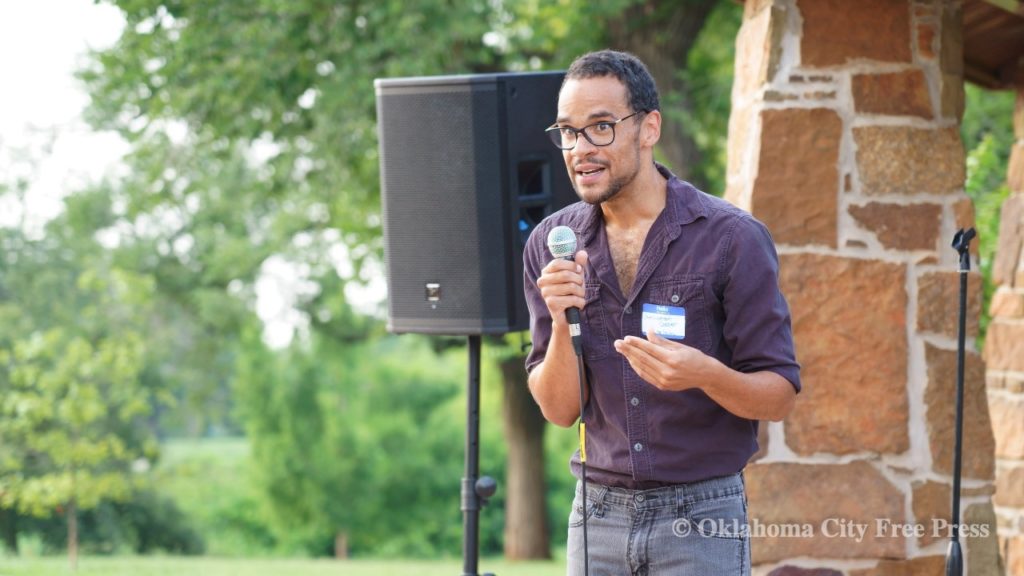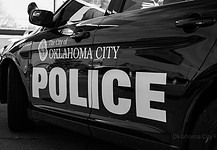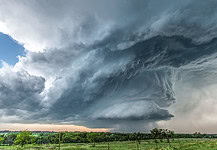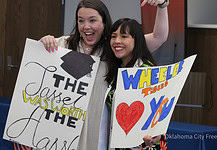Last Updated on August 6, 2023, 2:59 AM | Published: July 30, 2023
OKLAHOMA CITY — With traffic fatality numbers sadly still climbing, and with some prominent voices still underwhelmed with the city’s attempts at safety infrastructure and education, a newly approved $800,000 grant stands to provide a clearer roadmap toward safer Oklahoma City streets.
The grant comes via the U.S Department of Transportation to fund a sweeping new road safety plan through Vision Zero.
Vision Zero is an international non-profit dedicated to eliminating traffic fatalities in all forms and significantly reducing traffic injuries by addressing speed limits, driver education, and even bigger-picture road construction and layout in cities around the world.
The $800,000 grant was awarded to OKC in February of this year, with the city council last week officially approving its use as well as another $200,000 to be included from city Department of Transportation funds resulting in a total for the program of $1 million.
“Vision Zero really is ‘mode neutral,’ so it’s about reducing all fatalities on streets, from transit to cars to bikes and pedestrians. It’s kind of all the above,” said Justin Henry, transportation program planner within the OKC Planning Department. “Now, I will say that pedestrian fatalities is an area we’ve seen really kind of spike recently, so there will probably be a special focus on that.”
See Henry’s presentation deck for the City Council embedded at the end.
Oklahoma City is one of only two major US cities currently without an active Vision Zero action plan.
Anticipating a plan
The combined $1 million will be used to find and hire an outside consultancy to study Oklahoma City’s road system and to highlight a “high injury network” of roads and intersections throughout the city that will be the primary focus of a full-scale action plan to be presented next year.
“Our high injury network is the spots on our streets and intersections where we’re seeing the most fatalities and the most serious injury collisions,” Henry explained. “They can really help us understand what factors are in play there and if there are any recurring themes that we can use to help guide some infrastructure changes.”

Already, there are some likely factors that Henry knows the plan will need to address just from looking at the city’s most recent traffic data.
“One of the things we’re seeing is that a lot of our fatalities are happening during dark hours,” Henry said. “So we’ll probably need to do a lot of improvements for high-visibility crosswalks, additional street lighting, and those kinds of visibility elements.”
Speed concerns
Another expected issue to be addressed in the forthcoming plan that will likely not shock any conscientious driver of OKC roads is the noticeable increase in speeding, particularly on suburban and arterial streets.

The answer is to calm and slow speeding drivers around the city. However, the answer may not lie in the punitive measures that many might expect to see.
“Having police just go out and write a bunch of speeding tickets has actually been shown to have very little lasting, long-term effect,” Henry said. “With this plan, we really want to focus more on design elements, on designing streets so that people automatically drive a little slower.”
Vision Zero in other cities
Though we won’t know for sure what measures and recommendations are proposed in the final plan for OKC until it’s presented next year, we can look to other cities to see the (sometimes novel) ways that Vision Zero plans have been implemented to reduce traffic fatalities.
Dallas approved a comprehensive Vision Zero action plan in early 2022, laying out goals and benchmarks for everything from city engineering to legislation to law enforcement.
While Dallas saw a number of recommendations that are likely to be mirrored in OKC’s plan – such as the expansion of “mid-block” crossings, improved street lighting, and enhanced speed data collection – the Dallas Vision Zero plan also calls for improved training of law enforcement.
The Dallas plan recommends not only increasing police training for how to best enforce speed limits and how to quickly and accurately investigate crashes but also recommends better training for police regarding their own driving habits and speeds in an entry titled “Practice What We Preach.”
In New York City, an early Vision Zero adopter for the US since 2014, recent plans have focused on one of the city’s most concerning causes for cyclist injury: passengers opening car doors into curbside bike lanes without looking.
To encourage better care and awareness before opening doors into bike lanes, New York’s Vision Zero task force recently partnered with city departments and early rock-n-roll legend Chubby Checker to create the “New York Twist,” a safety-minded ad campaign educating passengers on how to check for cyclists.
Lane width problem
Henry expects that OKC’s plan will also see some unique recommendations regarding some of the city’s own quirks. For example, the notably large lane widths and increasing vehicle sizes.
“That’s something that doesn’t get talked about a lot, but vehicle size is another big contributor to increased fatalities,” he said. “And when looking at lane width, especially in pedestrian-heavy areas, the smaller lanes will actually slow drivers down and make them a little more attentive. A lot of cities have a ten-foot minimum lane width, but OKC has an eleven-foot minimum, and our standards typically are more like twelve or thirteen.”
‘Human scale’
Approval for the grant and the matching city funds passed the OKC City Council unanimously last week, though it’s clear from the enthusiasm and statements of Ward 2 Councilor James Cooper that the plan’s expected recommendations are likely to most appeal to the council’s progressive arm.
Cooper is an avid cyclist and has long pushed for safer, more walkable streets

“I have been saying this for an entire city council turn based on knocking thousands of doors,” Cooper said. “People told me the biggest things they want to see are walkability, bikeability, and public transportation.”
The likelihood is high that next year’s Vision Zero OKC proposal will recommend the same kind of systemic, infrastructural changes to city streets and transit that Cooper and those constituents have been hoping to see.
“It’s simple,” Cooper told me. “Design better streets at human scale. Make our streets truly for people.”
Vision-Zero-OKC-PRESENTATION-2-1Correction — In our original story we indicated that the grant to OKC was from Vision Zero. We have corrected this report to show that it was from the U.S. Department of Transportation.
Brett Fieldcamp has been covering arts, entertainment, news, housing, and culture in Oklahoma for nearly 15 years, writing for several local and state publications. He’s also a musician and songwriter and holds a certification as Specialist of Spirits from The Society of Wine Educators.











